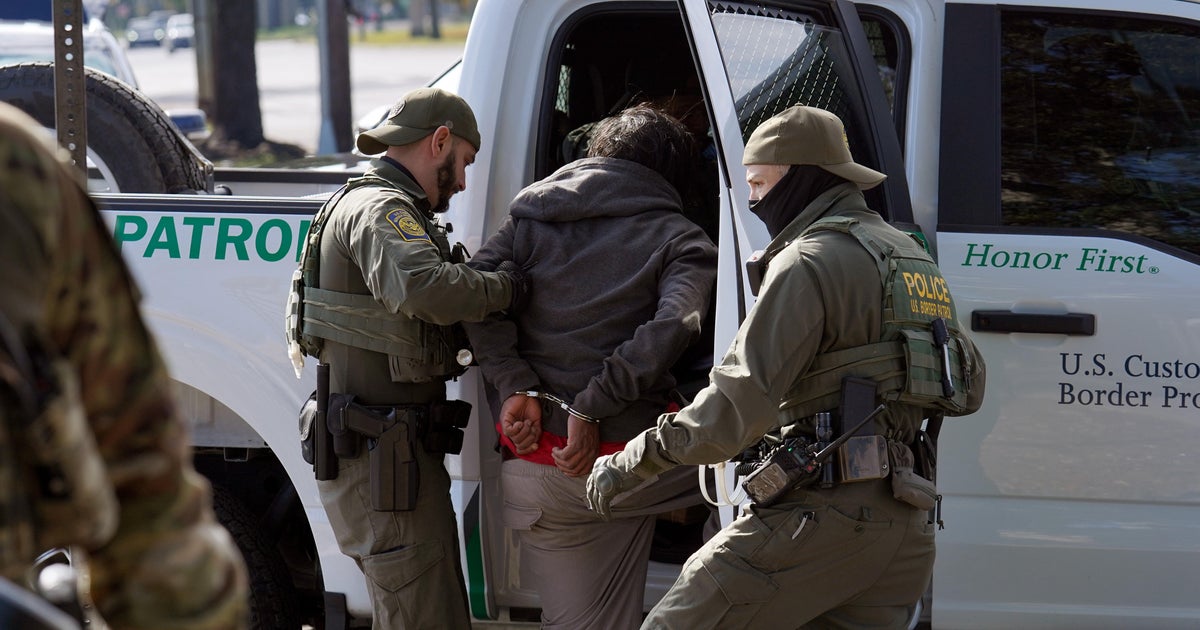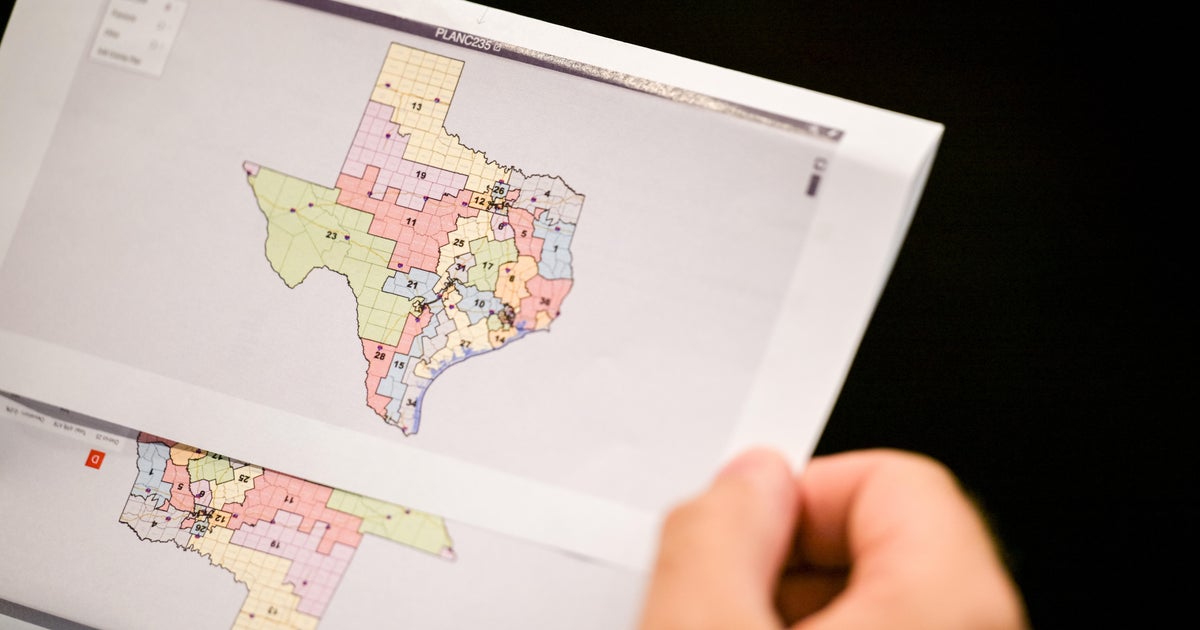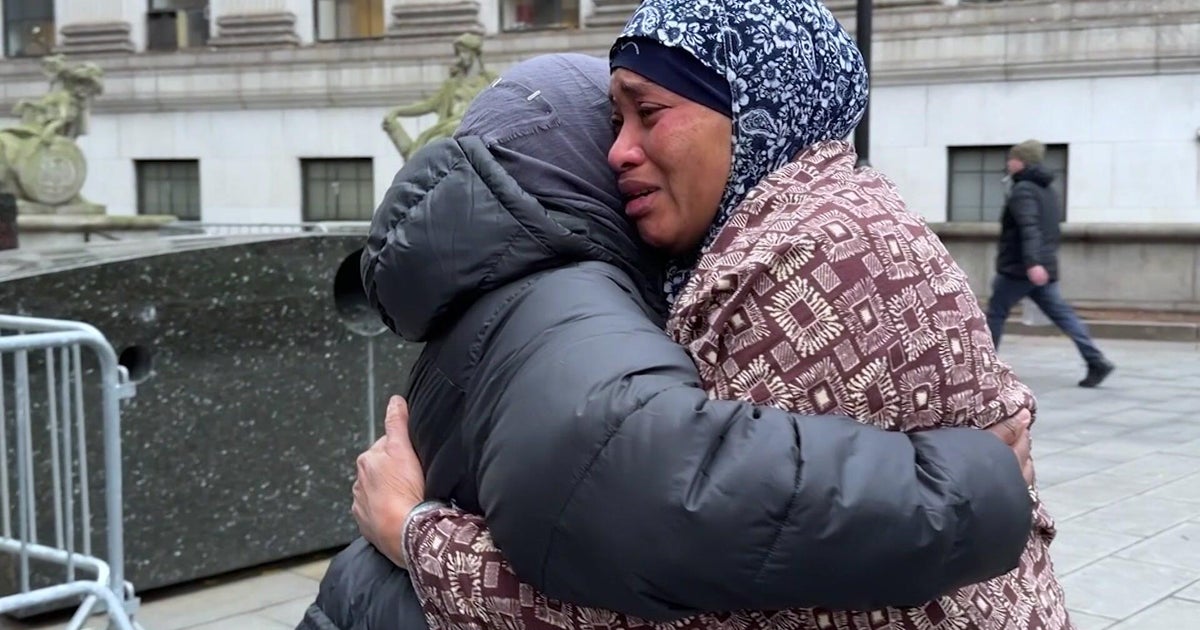How to spot U.S.-based violent extremists: U.S. officials release 42 indicators
As the threat of domestic violent extremism intensifies, federal law enforcement agencies are asking communities to report family members, friends or peers who show signs of extremist behavior. The FBI, Department of Homeland Security and the National Counterterrorism Center have published a resource designed to help the public spot "ideologically motivated U.S. based violent extremists."
The 34-page report, released Friday, is the first of its kind to be published following the U.S. Capitol assault on January 6, 2021. The lengthy "see something, say something"-style public service announcement comes at a time when federal law enforcement has pumped out warnings of unsophisticated — but potentially lethal — attacks by lone actors that provide law enforcement with a sparse paper trail.
With past threats, law enforcement typically had more clues to go on, FBI director Christopher Wray said last week, in the wake of the hostage standoff in Colleyville, Texas.
"The sleeper cell-type of threat of the past, that's a bunch of people plotting an attack over a long period of time. Between their training and planning their fundraising, there's a lot of dots to connect," said Wray. "The threat we as Americans face today is more and more of these lone actors plotting essentially fairly simple and unsophisticated but just as deadly attacks. That means there are a lot fewer dots, if you will, to connect and a lot less time in which to connect them."
The booklet lists 42 "indicators" that range from "unusual goodbyes or post-death instructions" to "surveilling potential attack targets" to "isolating oneself from family and peers, particularly if citing violent extremist doctrine or ideology."
"Previous editions of this booklet have focused solely on the indicators of homegrown violent extremist mobilization to violence," the report says. "This edition has been expanded to include indicators that apply to multiple ideologically motivated US-based violent extremists, given the evolving complexity and variety of factors influencing the domestic threat landscape."
The booklet was first published in 2015, and updated in 2017 and 2019.
The first indicator listed in the 2021 update is "traveling, within the United States or abroad, to carry out or participate in violent extremist activity" a warning sign that resonates as hate crimes reach two-decade highs.
Local law enforcement spotted one of those single dots last month, when a Cass County, Iowa, police sheriff pulled over a California man driving cross-country to the White House on a mission to "do whatever it takes" to kill top officials, including President Biden and Dr. Anthony Fauci.
The man, Kuachua Brillion Xiong, 25, made it as far as Iowa before authorities discovered an AR-15-style rifle, ammunition, loaded magazines, and body armor in his car, according to the complaint. Targeted shootings across the country — including mass casualty events in Denver, Indianapolis and Atlanta — have underscored the challenges faced by law enforcement, as some suspects were reported to law enforcement prior to the attacks.
Earlier this month, the Justice Department announced a new domestic terrorism unit centered on tackling the rising U.S.-based threats. "The threat posed by domestic terrorism is on the rise," Assistant Attorney General Matthew Olsen told lawmakers this month. "The number of FBI investigations of suspected violent extremists has more than doubled since the spring of 2020."
Last week, Alejandro Mayorkas, secretary of the Department of Homeland Security, told CBS News that he supports efforts to double funding to non-profit organizations, including places of worship, to combat the heightened threat environment.
Last March, U.S. intelligence agencies issued a classified, joint assessment of the national security threat posed by domestic violent extremism. An unclassified summary revealed social and political factors, including the coronavirus pandemic and "emboldening impact of the violent breach of the U.S. Capitol," will "almost certainly" spur domestic violent extremists to engage in further violence.
Friends, families, teachers and local law enforcement have played an increasing role in alerting federal law enforcement to potential or established security threats.
Although the newly-released public guidance is not specifically tied to the January 6 attack, families and friends of defendants have played an outsized role turning in relatives after learning of their alleged involvement in the breach.
In one such instance, prosecutors say Guy Reffitt of Texas, who was indicted on multiple counts including obstructing the official proceeding of counting electoral college votes, threatened his children after they learned of his alleged involvement in the attack.
Reffitt allegedly told his son and daughter following January 6, "If you turn me in, you're a traitor and you know what happens to traitors...traitors get shot," according to conversations investigators had with Reffitt's spouse as described in court documents. "Reffitt's son took Reffitt's statements as a threat to his life," prosecutors wrote in another court filing.
Reffit pleaded not guilty to all charges, has made multiple attempts to get the charges dismissed, and plans to fight the indictment at trial starting next month.
Last year, FBI Director Christopher Wray pledged that his department would do more to prevent events like January 6.
"January 6 was not an isolated event," Wray said, adding that the threat of domestic terrorism was "metastasizing" across the country. "The FBI will not tolerate agitators and extremists who plan or commit violence."
Paying attention to warning signs and early intervention could be the difference between life and death for students, too. Last year, the U.S. Secret Service analyzed nearly 70 disrupted school plots that were reported and averted between 2006 and 2018. The key to preventing school attacks, researchers found, is early intervention by someone close to a student possibly planning violence.
In the first year of the Biden administration, DHS issued more than 80 intelligence products related to domestic violent extremism over the past year, including four National Terrorism Advisory System bulletins. The latest also warned of an uptick in online activity by al Qaeda- and ISIS-affiliated groups following the U.S. withdrawal from Afghanistan.










